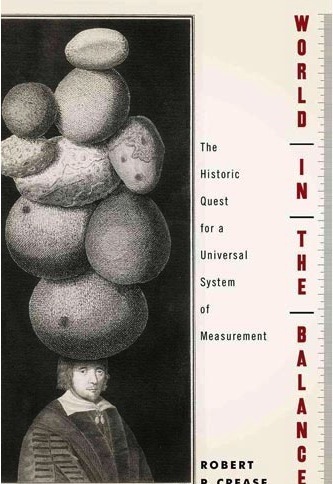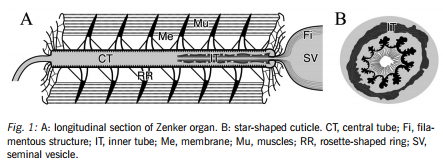Marc Abrahams's Blog, page 562
July 12, 2012
One Way to Not Discriminate Between World-Class Female Gymnasts and Sedentary Girls
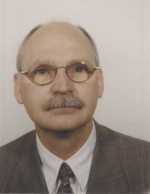 In case you were wondering:
In case you were wondering:
“The Left Hand Second to Fourth Digit Ratio (2D:4D) Does Not Discriminate World-Class Female Gymnasts from Age Matched Sedentary Girls,” Maarten W. Peeters, Albrecht L. Claessens [pictured here], PLoS ONE 7(6): e40270. doi:10.1371/journal.pone.0040270. The authors are at KU Leuven, Leuven, Belgium.

July 11, 2012
She of the industrial standard breasts
From the book World in the Balance: The Historic Quest for an Absolute System of Measurement by Robert P. Crease:
Rita Mazzella is the doyenne of bra fit models. Lingerie companies use her breasts — size 34C — to construct new brassiere lines, then scale the size down to A and B, and up to D. “You probably think a model is a young, beautiful woman on a catwalk,” she told me over lunch. Not me. I’m a construction model. Designers put prototypes on me; I tell them when they get it right.”
Mazella, in her seventies, interrupted her packed schedule to meet me at a Madison Avenue cafe between modeling sessions.
(HT Nicola Twilley)

Curiosity: “ZERO margin of error”?
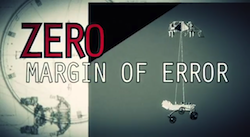 The NASA Jet Propulsion Lab produced this music-thumping action video to explain the wondrously complicated plan for the new machine (which is called “Curiosity”) to enter the Martian atmosphere and make it safely to the planet’s surface. There is one teensy line of text, near the start, that is fun for starting arguments with any good engineer.
The NASA Jet Propulsion Lab produced this music-thumping action video to explain the wondrously complicated plan for the new machine (which is called “Curiosity”) to enter the Martian atmosphere and make it safely to the planet’s surface. There is one teensy line of text, near the start, that is fun for starting arguments with any good engineer.
The video says that this complex design has “ZERO margin of error”.
Zero is, in its way, a big deal. Engineering, from one point of view, is all about building in as much margin for error as possible. Is this project the exception? Was it in fact designed to have…. ZERO margin of error”?

“How is a giant sperm ejaculated?”
Now, at last comes an answer (perhaps the answer) to the question, “How is a giant sperm ejaculated?” The answer is in the form of a published study:
“How is a giant sperm ejaculated? Anatomy and function of the sperm pump, or ‘Zenker organ,’ in Pseudocandona marchica (Crustacea, Ostracoda, Candonidae),” Shinnosuke Yamada (pictured here) and Renate Matzke-Karasz, Naturwissenschaften, vol. 99, no. 7, 2012, pp. 523-35. The authors, respectively at Shizuoka University, Japan, and at Ludwig-Maximilians-Universität München, Germany, report:
“‘Giant sperm’, in terms of exceptionally long spermatozoa, occur in a variety of taxa in the animal kingdom, predominantly in arthropod groups, but also in flatworms, mollusks, and others. In some freshwater ostracods (Cypridoidea), filamentous sperm cells reach up to ten times the animal’s body length; nonetheless, during a single copulation several dozen sperm cells can be transferred to the female’s seminal receptacle. This highly effective ejaculation has traditionally been credited to a chitinous-muscular structure within the seminal duct, which has been interpreted as a sperm pump. We investigated this organ, also known as the Zenker organ, of a cypridoid ostracod, Pseudocandona marchica, utilizing light and electron microscope techniques and produced a three-dimensional reconstruction based on serial semi-thin histological sections. This paper shows that numerous muscle fibers surround the central tube of the Zenker organ, running in parallel with the central tube and that a thin cellular layer underlies the muscular layer. A cellular inner tube exists inside the central tube. A chitinous-cellular structure at the entrance of the organ has been recognized as an ejaculatory valve. In male specimens during copulation, we confirmed a small hole derived from the passage of a single spermatozoon through the valve. The new data allowed for proposing a detailed course of operation of the Zenker organ during giant sperm ejaculation.”
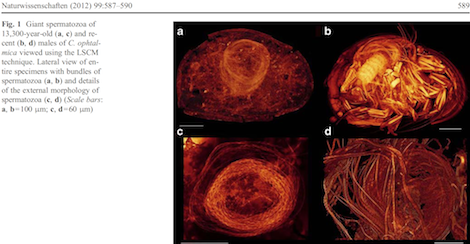
(Thanks to investigator Tom Gill for bringing this to our attention.)
BONUS, by the same authors: ”Histological analysis of the ‘Zenker organ,’ in Pseudocandona marchica“, which includes this graphic graphic:

July 10, 2012
Instrumental Maladies (part 1: Saxophones)
Music may be ‘the universal language of mankind’, and ‘the food of love’, but it’s produced at a cost – from the musician’s point of view it’s unfortunately not always entirely 100% risk-free. Here is a partial list of the health-hazards of playing a musical instrument . . .
Part 1 : Saxophones
• Hypersensitivity pneumonitis due to molds in a saxophone player.
• Playing saxophone induced diffuse alveolar hemorrhage: a case report.
• Persistent cough in a saxophone player
Coming soon : More Instrumental Maladies

XKCD: The physics of relativistic baseball
XKCD, Randall Munroe’s comic strip, today considers the question “What would happen if you tried to hit a baseball pitched at 90% the speed of light?”
Even if you find the game of baseball to be confusing or uninteresting, the answer might please you. The drawing below is but one detail:
BONUS (for baseball historians only): The description of an item for sale on Ebay hints that question may have been put to an actual test in the 1940s. The item for sale is described in these words: “1946 July 1 LIFE Magazine Bikini Atomic Bomb Test – Ted Williams – Joe Louis”

Ig Nobel Night Big Event in The Netherlands
 We are delighted to announce that on Ig Nobel Night (Thursday, September 20, 2012) there will be a grand, middle-of-the-night event in the Netherlands, at a beautiful theater, the Stadsgehoorzaal (pictured here), in the city of Leiden.
We are delighted to announce that on Ig Nobel Night (Thursday, September 20, 2012) there will be a grand, middle-of-the-night event in the Netherlands, at a beautiful theater, the Stadsgehoorzaal (pictured here), in the city of Leiden.
It begins at 11:00 pm (Leiden time) with live appearances by several Dutch Ig Nobel Prize winners and other notable people. Then everyone will watch a live projection of the Ig Nobel Prize ceremony, webcast in from Cambridge, Massachusetts. Afterwards, everyone will be served a delightful, light breakfast.
Details (in Dutch) are here below, and on the event’s Dutch web site:
Nederlandse Ig Nobel Night
DONDERDAG, 20 september 2012 23.00 – 03.30 uur
Genre: Kennis&Werken Locatie: Stadsgehoorzaal
€ 17,50 / € 10,- voor CJP en studenten
De Ig Nobelprijzen worden jaarlijks op Harvard University uitgereikt aan tien wetenschappers die met hun onderzoek mensen ‘eerst aan het lachen maken en daarna aan het denken zetten’. De 22ste ceremonie is dit jaar op 20 september real time in Leiden – op een groot scherm – te zien in de Leidse Schouwburg. Voorafgaand aan de ceremonie is er een programma met onder andere tafelgesprekken met Nederlandse Ig Nobelwinnaars, de off-keynote speech, de verkiezing van het LFHCfS™-lid van het jaar, culturele intermezzo’s en de befaamde ‘24/7 lectures’ door prominente wetenschappers.
Een ware Ig Nobel Night, bestemd voor de grote schare fans in de academische- en onderzoekswereld, de pers en andere nieuwsgierige mensen die zich graag laten trakteren op een nacht vol hoogstaand wetenschappelijk en cultureel vertier.
Programma:
22.00 – 23.00 uur Ontvangst in de Leidse Schouwburg
23.00 uur Aanvang van programma bestaande uit de onderdelen:
tafelgesprekken met Nederlandse Ig Nobelwinnaars,
de off-keynote speech,
de verkiezing van het LFHCfS™-lid van het jaar (de wetenschapper (m/v) met het langste haar),
culturele intermezzo’s,
de befaamde ‘24/7 lectures’ door prominente wetenschappers, waarin zij in 24 seconden hun vakgebied mogen uitleggen, gevolgd door een samenvatting voor leken in zeven woorden.
een live verbinding met de Ig Nobel Prize Ceremony locatie, Harvard voor een sfeerimpressie

Celery and viruses

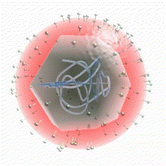 Animated and pictured here for illustrative purposes (courtesy of my improbable colleague) is the rubella virus.
Animated and pictured here for illustrative purposes (courtesy of my improbable colleague) is the rubella virus.
This virus is ‘closely related’ to the vegetable celery by virtue of the clinical picture it produces. On X-ray images of the long bones (e.g. thigh bone and shin bone) – in virus affected individuals – the bone has alternating strips which resemble a celery stalk in appearance.
This resemblance, perhaps with an eye of faith can be seen in: Eisenberg RL, Clinical Imaging: An Atlas of Differential Diagnosis, Lippincott Williams & Wilkins, 2009 page 1080.
BONUS. More information about the devastating effects of rubella can be found here.

July 9, 2012
The Vegetarian Who Ate a Sausage with Curry Sauce
A report called The Vegetarian Who Ate a Sausage with Curry Sauce can provide cheer both for meat-eaters – because it tells how a hunk of processed meat served as a helpful warning beacon, possibly lengthening a person’s life – and for vegetarians – because that meat was the stark symbol of someone’s health going very wrong.
Despite its children’s-bookish title, this report was published in the January 2003 issue of The Lancet Neurology, along with the less child-friendly sounding Principles of Frontal Lobe Function and Should I Medicate My Child?
The authors, Josef Heckmann, Christoph Lang, Hermann Stefan and Bernhard Neundörfer, of the department of neurology at the University of Erlangen-Nuremberg, in Germany, tell the story of a 61-year-old woman who visited her work canteen for lunch with a male colleague….
So begins this week’s Improbable Research column in The Guardian.

July 8, 2012
Spuriouser and Spuriouser
 The Spurious Regression Problem was first described in a 1974 paper by C. W. J. Granger, and P. Newbold, in the Journal of Econometrics 2, 1974, pp. 111-120. ‘Spurious Regressions in Econometrics’
The Spurious Regression Problem was first described in a 1974 paper by C. W. J. Granger, and P. Newbold, in the Journal of Econometrics 2, 1974, pp. 111-120. ‘Spurious Regressions in Econometrics’
Some econometric theorists suggest, however, that the spurious regression problem is itself spurious. Take for example professor Bennett T. McCallum (pictured) of the Tepper School of Business at Carnegie Mellon University, US. The professor explains the rationale in his paper: Is the spurious regression problem spurious?(Economics Letters, Volume 107, Issue 3, June 2010, Pages 321–323)
Yet other econometricians though, assert that any assertions that the Spurious Regression Problem is spurious are also spurious – in other words, the problem is not spurious. Berenice Martínez-Rivera (Banco de México), and professor Daniel Ventosa-Santaulària (Universidad de Guanajuato. Campus Guanajuato, Sede Marfil. DCEA, Departamento de Economía y Finanzas. El Establo S/N, Guanajuato, Gto, Mexico) do just that in their paper: A comment on ‘Is the spurious regression problem spurious?’ (Economics Letters, Volume 115, Issue 2, May 2012, Pages 229–231)
“McCallum (2010) presented evidence that the spurious regression problem can be solved by standard means. We show using finite-sample evidence that the spurious regression problem cannot always be fixed using standard autocorrelation correction procedures and remains, therefore, a not-so-spurious problem.”

Marc Abrahams's Blog
- Marc Abrahams's profile
- 14 followers




